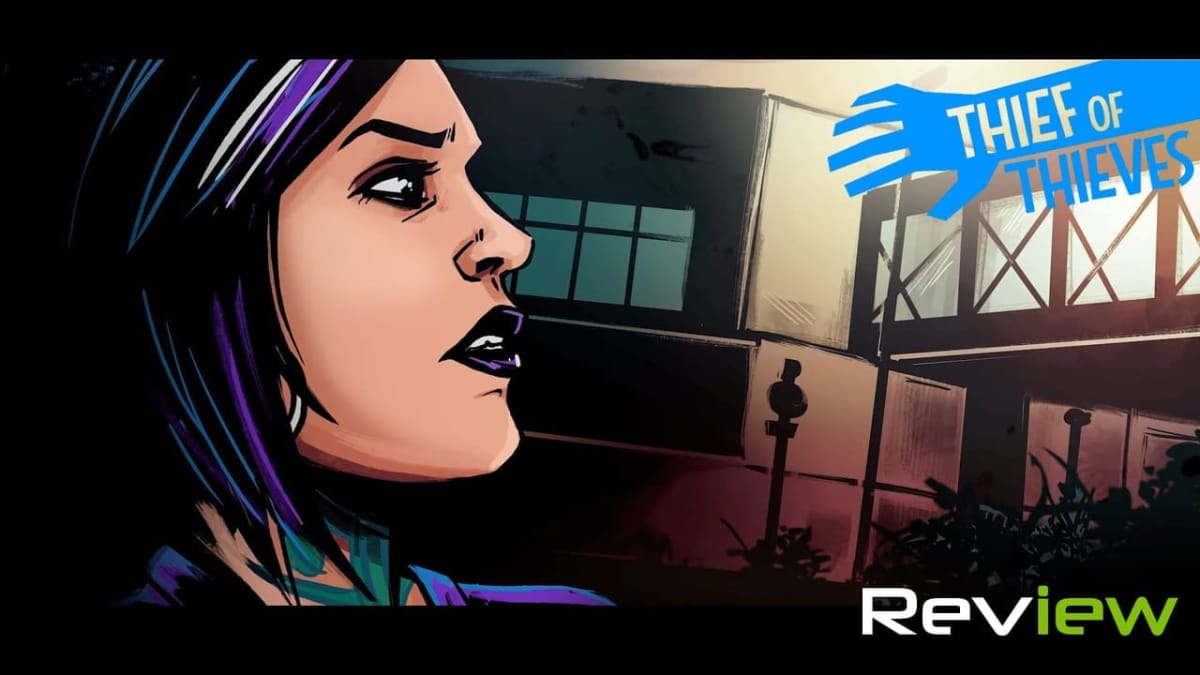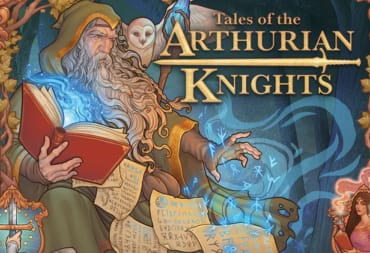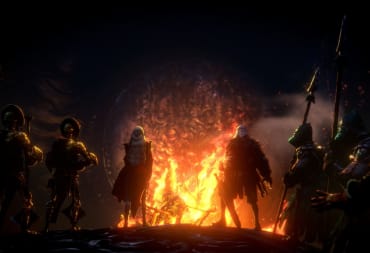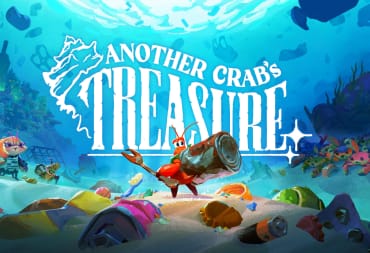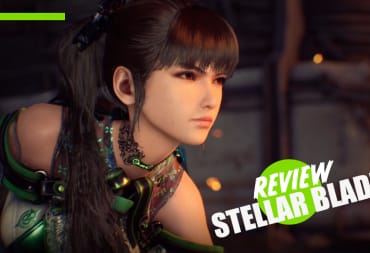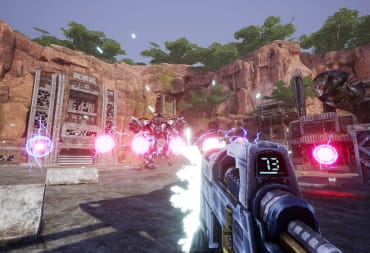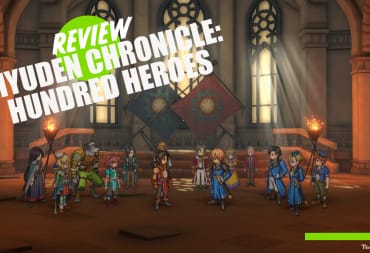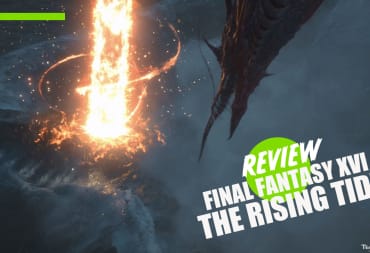The protagonist of Thief of Thieves is often insulted for being a jack of all trades, master of none. That phrase also describes the game itself and carries the same negative connotation. While Thief of Thieves: Season One wants to be a hybrid between Hitman-style stealth and Telltale-style storytelling, it's far less than the sum of its parts. Playing Thief of Thieves is like walking into a frat house after a party; everything is broken or sticky and there are bugs everywhere.
The adventure revolves around master-thief in training Celia Kowalczyk. While at the airport, Celia is pulled aside by FBI agent June Ikeda. What follows is a mental game of chess between two big personalities as they review Celia's movements over the past few months. It's clear the agent knows exactly what's going on, but whether she has evidence is up to you. That's the fun part. If you play loud and recklessly, she's ready to throw the book at you. If you play like a master-thief, she has nothing. That's a wonderful set-up for responsive storytelling that pulls double duty as a clever framing device.
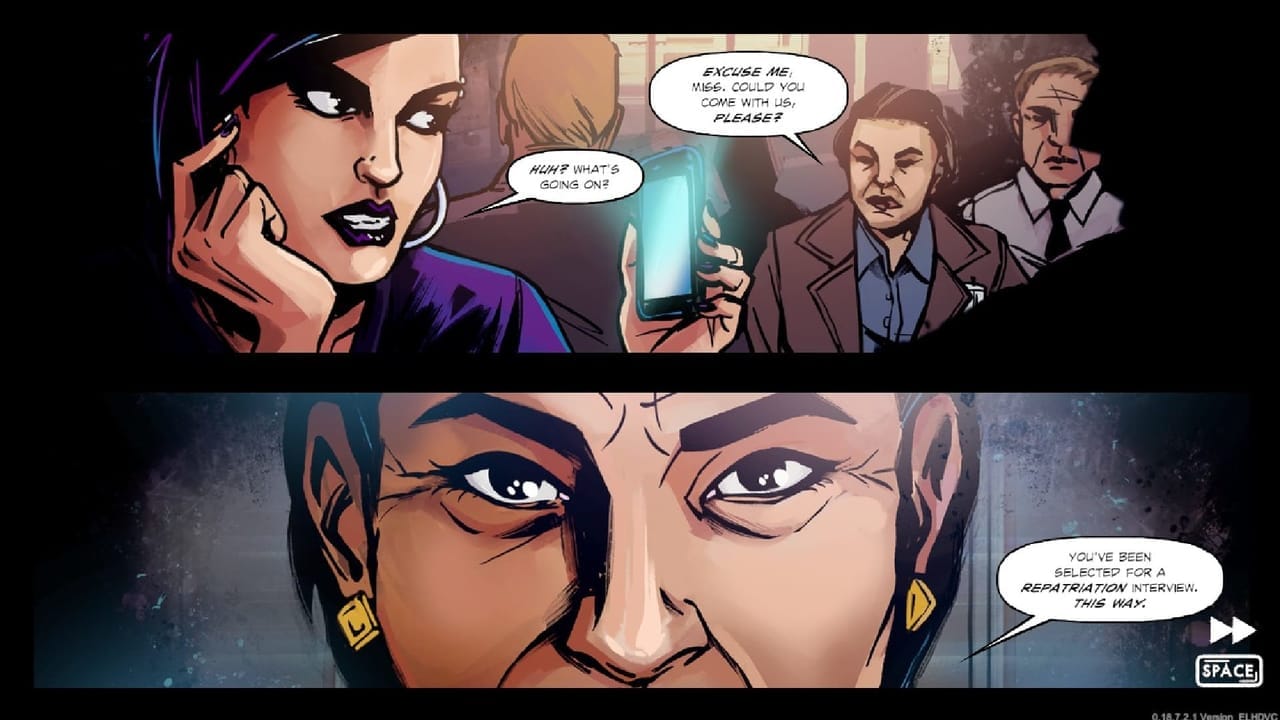
Unfortunately, the final volume ditches the framing device to finish the story in real time. The FBI agent is inexplicably missing. The interview didn’t matter, it was all theatrics. The final chapter still happens whether the agent has zero evidence or a picture of you cracking a safe. So why do it at all? This highlights a bigger weakness in the Telltale-style narrative structure. No matter what happens, the story must ultimately funnel to the same point with slightly different dialogue. You win, even if you fail.
There are four heists in Thief of Thieves, all but one in the style of casing and execution. As you might expect, the first heist is the strongest. It has more options for disguises, sneaking, and social engineering than other chapters. It also has a few surprising twists that help to establish a responsive atmosphere.
While in disguise, you might be spotted by a security guard who comments on Celia’s tattoos. It’s a nice touch but poorly handled. A lot of Celia’s problems throughout the story can be solved if she just changed her appearance. Celia, an apprentice of a master thief, has purple hair, purple lipstick, a face full of piercings, and teal tribal tattoos covering her arms and neck. If the security guard in Volume 1 comments on her tattoos, Celia’s boss chimes in to say, “you didn’t cover your ink?”
The problem is that the overarching story hinges on Celia not changing her appearance while simultaneously hand-waving player's concerns for the purpose of advancing the plot. It's not even a narrative funnel, this is straight up railroading. Volume 1 needed another puzzle or optional objective to maintain Celia’s stealthy character in gameplay while still finding a way to advance the story.
Although a stealth puzzle would be ideal for plot advancement, it doesn’t help make it fun. The stealth in Thief of Thieves is completely broken. It just doesn’t work, yet it makes up the majority of gameplay. First, there's the camera, a trollish entity who feels like it’s trying to hide something from you. It stubbornly refuses to move from its director’s chair, except when it would be disorienting to the player. Think of Thief of Thieves like playing a 2.5d Hitman side-scroller from an isometric angle.
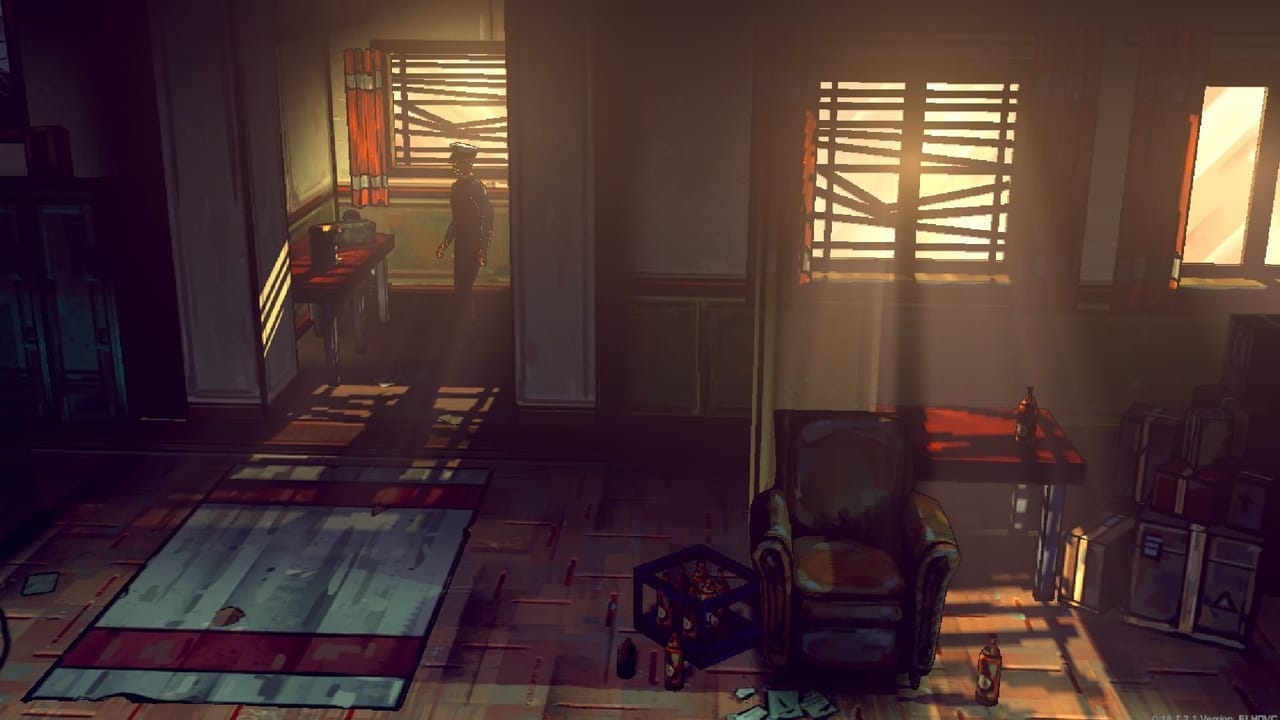
The next problem with stealth, seen especially in Volume 2, is that guard’s AI bounces between terminator vision and complete sensory deprivation. I’ve seen them compared to goldfish, but even that’s generous. Even when allies warn you certain sounds will cause them to investigate, nothing happens. Yet, a loud footstep or a tipped over trashcan causes every guard on the map to lock on like its Invasion of the Body Snatchers.
Even if the guards are chasing Celia, they can't possibly tackle her. They're good at closing enormous gaps in a matter of seconds, but then they maintain a constant distance. Instead of creating tense action scene, Thief of Thieves becomes a cel-shaded Benny Hill. These factors, combined with a broken, nonsensical security camera mechanic makes Volume 2 the low point of the Thief of Thieves experience.
Security cameras have a visible cone of sight, but they’re white. As you might imagine, it’s difficult to see a white cone of light on a cream-colored floor during the day. Here’s the kicker. If you enter a sliver of a camera’s range, it automatically locks onto you, even if it must spin 200 degrees and clip into a wall to do so. The camera’s cone then turns red, alerting every guard on the map to your position. Cameras are so aggressive, they will double their normal range in response to the sound of Celia running (even if they can't see where the sound is coming from), but not in response to a rolling soda can.
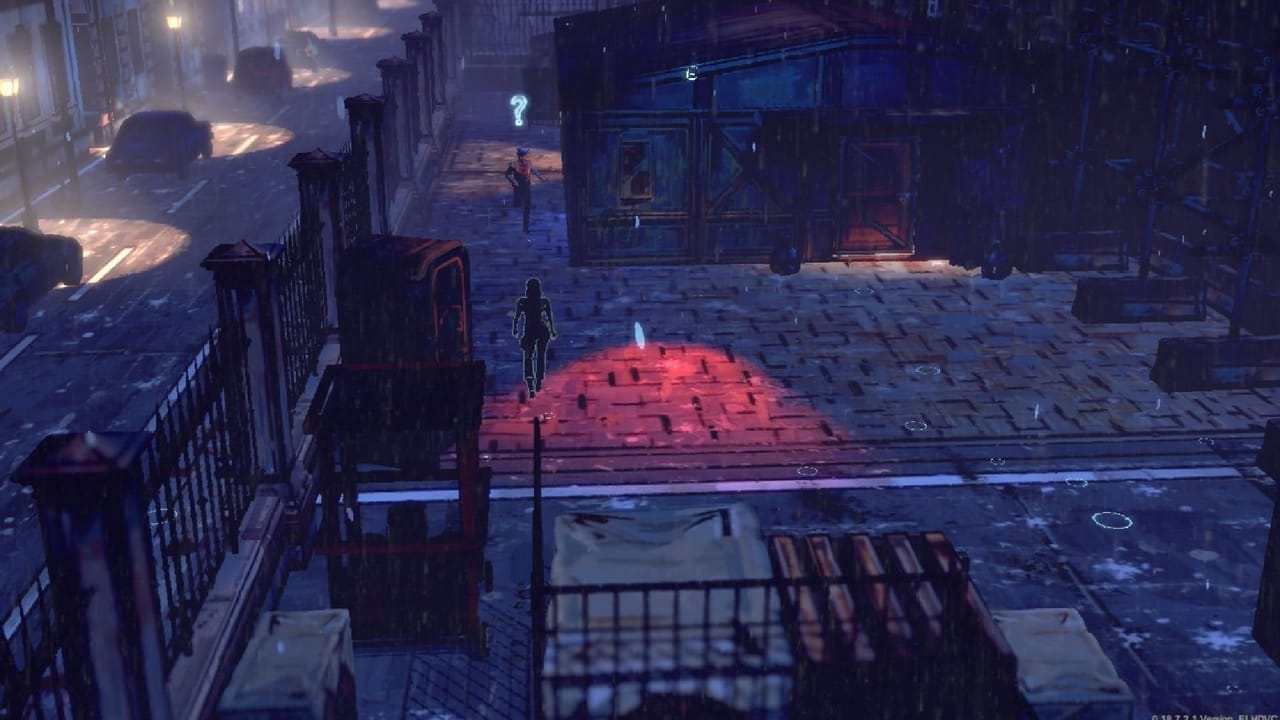
These problems are only made worse by Thief of Thieves ensuring you that the cameras are old and antiquated and by the fact that one-third of Volume 2 revolves around making sure nobody is watching the cameras. So somehow, these old cameras can do all that when nobody 's watching them. That means one-third of the experience had no narrative weight or impact on gameplay whatsoever. It was all theatrics.
What is this aforementioned section? Only the lowest point of Thief of Thieves’ four episodes. In an utterly convoluted plan, Celia needs to do some breaking and entering. She’s accompanied by a thug who constantly voices his plan to knock down the door and batter everyone inside. The more interesting solution is to climb on the roof. This exact moment showcases Thief of Thieves’ AI, puzzles, and minigames at their absolute worst.
For no reason, the lone resident of this house completes a cycle of watching TV downstairs, looking out his bedroom window upstairs and staring at a wall every 90 seconds. The intention is clear. You’re supposed to move between the upstairs rooms while avoiding the homeowner. The problem is that extremely rigid patrols like this shatter immersion. This character is not a man relaxing at home, he’s a robot wearing human skin. The same can be said about his dog, who goes ballistic if the player walks across the upstairs floor, but does nothing when the old man does the same.
This section is so bad, it’s faster, easier, and more fun to just beat down the door. There’s a speech “puzzle” here that amounts to collecting evidence and flipping coins. The dialogue quips become increasingly vague and you can never be sure what Celia is going to say next or the tone she will say it in. Incredibly, it doesn’t even matter if you fail. The guy still gives you what you want, the game just clutches it’s pearls and says “I can’t believe forcing you to bring along a violent thug resulted in violence!”
I might not mind being scolded for the actions of my accomplices if they weren’t completely useless. You have the muscle/pickpocket, the hacker, the driver/locksmith, and the… kindly old man. You’re supposed to use them to complete objectives, but it’s always easier to do the task yourself. In fact, Thief of Thieves rewards you for ignoring the allies in the tutorial puzzle designed to showcase what they can do.
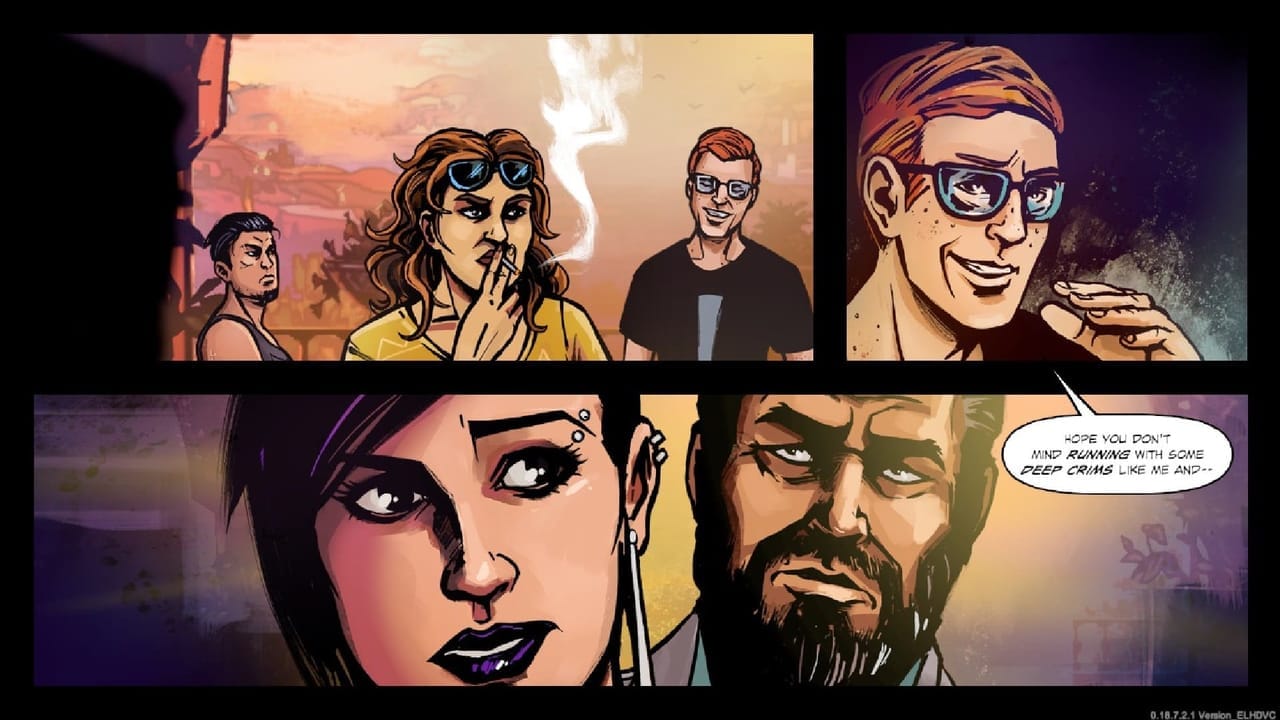
Of the four allies, the hacker is the most interesting only because it seems the writers gave up on him halfway through the development process. In Volume 2, he speaks with an irritating London street dialect. He’s basically Thief of Thieves’ Claptrap. Hilariously, he abruptly changes his accent and overall personality literally overnight in Volumes 3 and 4. If Celia asks about the change he says, “Oi! Mind yer own biznizz blud!” This line is the only moment after Volume 2 where the hacker uses his original dialect. If this was character development, it failed colossally. If this was a response to the character's poor reception from Volume 2, it's a really poor handling of a retcon. Without any explanation or handwaving, the hacker turns into a completely different character with a completely different voice. Why have the original dialect at all?
By the end of the game, I realized the side characters hadn’t done anything. The muscle had beat-up a homeowner on his only outing and was still being scolded for it. If you do the puzzle correctly, he does nothing at all. The safecracker did nothing because she gives you the option to do the only thing she's good at. The hacker was an important part of a single mission, but his actions gummed up Volume 3. The old man stays at home, constantly in your ear. All I could think was “why are these people on my team?” They don’t add anything, but the narrative acts like they’re just as important as Celia. When asked which companion I wanted for the finale of Volume 4, I didn’t hesitate to go alone. Incredibly, there’s even a reward for opting out of content.
The worst part about the companions is I wasn’t allowed to use them for the things I wanted them to do. Take, for example, the minigames. There are three: hacking, safecracking, and lockpicking. The last one is really, really bad and the safecracker won't do them for you.
Lockpicking is the most prevalent and most frustrating minigame in Thief of Thieves, featuring extensively in Volumes 1 and 2 and only once or twice after. It might be useful to describe how this minigame works because the tutorial doesn’t explain the finer points. The lockpick pops up. You see a perimeter in the center of a larger transparent circle. The goal is to keep the cursor inside the green area until the transparent circle shrinks enough to touch the dark circle. The bigger the transparent circle, the longer you need to keep focused. Once the attempt has begun, leaving the circle causes a two-second timer to start. If you reenter the circle, the timer stops. Sounds simple, right?
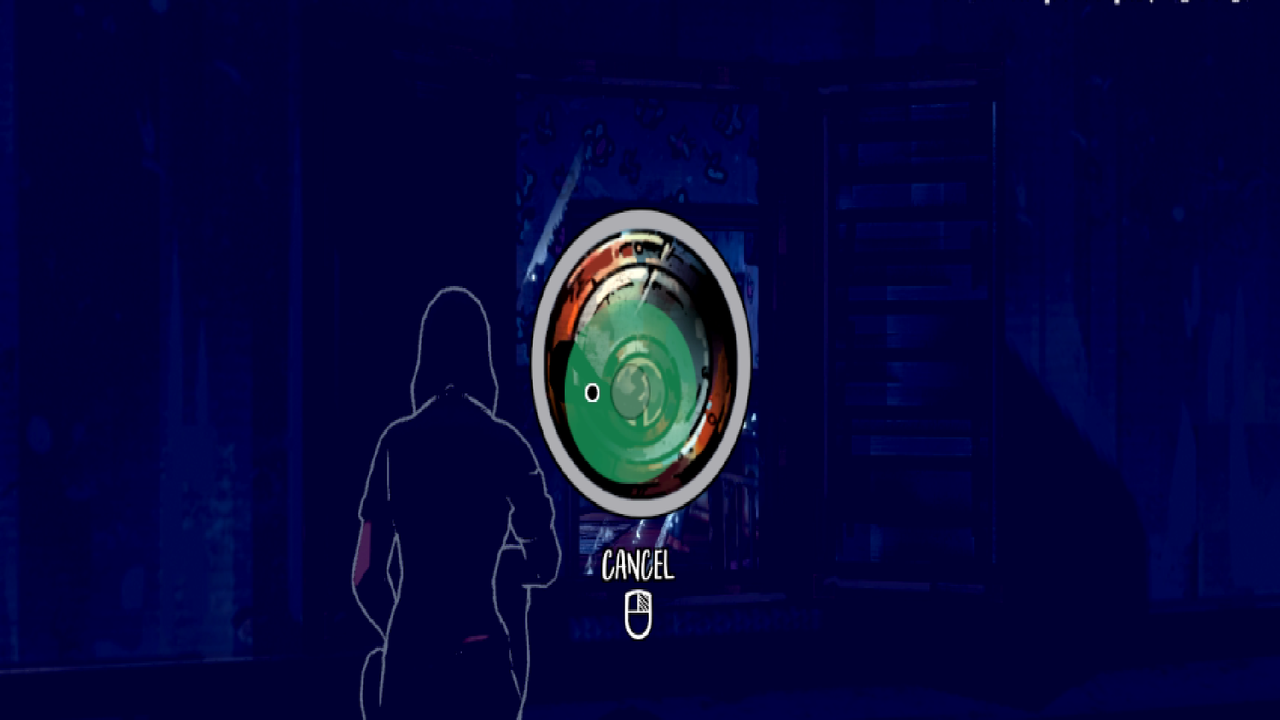
Thief of Thieves' lockpick minigame, is more luck than skill. This is due to three fatal design flaws. First, your cursor is always swaying in random directions. Worse, the tiniest readjustment sends the cursor flying out of the circle, quickly ending the attempt. Second, once the attempt has begun, the solid circle moves in a random direction. So not only is the cursor constantly moving without any input from the player, but the target is as well. Finally, the amount of time left to succeed the attempt is represented by a ring around the lock itself. This timer seems to be bugged as an attempt can fail before the time has expired, even when you would otherwise succeed. Between these three elements, there are four moving circles, too many to account for. Without hyperbole, you’re more likely to succeed a lockpick if you don’t touch the controls at all.
All these problems are very interesting in the context of Thief of Thieves’ episodic release structure. Volume 3 (released two weeks after Volumes 1 and 2) is almost self-aware. The terrible assist mechanics are basically gone, the annoying sidekick is severely toned down, the AI has a reduced presence, the dog and security camera mechanics are just missing, and the camera now walks the tightrope between a traditional sidescroller and a competent birds-eye view. In many ways, it’s a whole new game.
Volume 3 is the shortest. There’s hardly any story and no casing sequence. It starts on a train, which leads to some interesting gameplay by limiting navigation option. This scene is a side-scroller with simple puzzle elements. Four guards are patrolling the train and (with a little cleverness) you can trap them in a closet. You no longer have to dodge ether-huffing AI, you just have to stay out of their line of sight. It’s like a very, very buggy version of a Gunpoint tutorial.
Thief of Thieves is difficult to understand. Its quality swings like a pendulum and it’s constantly changing gimmicks. It’s hard to learn any single mechanic because whatever makes a section unique will be gone on the next map. No element introduced in Volume 2 is featured again in Volumes 3 or 4. That’s why it’s so important to be this thorough. No element of gameplay fully develops, and any attempt to change the formula of “press shift to sneak” ends in disaster.
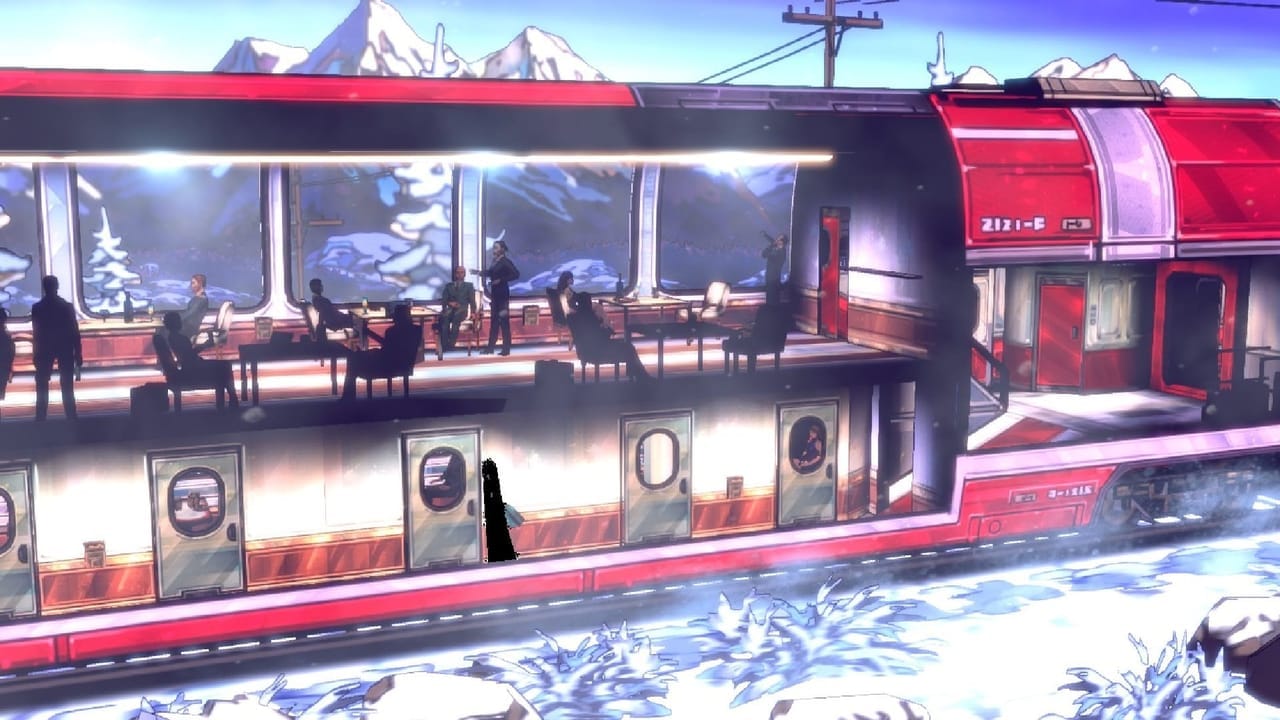
While the gameplay is fine, Volume 3 is the first time where the story seriously dips in quality. The first half is a wild card. A rival team of thieves is after the same prize as you. They show up with a vendetta against Celia’s team and a willingness to kill, but little explanation as to why. Once again it doesn’t matter. Despite a lengthy introduction for each member of the rival team, none of them feel fleshed out or characterized. I can’t even remember their names. Of the four rivals, only two appear in the final chapter.
At the beginning of Volume 4, I realized Thief of Thieves suffers from a reversed Star Trek curse. Only the odd numbered chapters have the honor of approaching mediocre. Volume 4 is not very good, but the bizarre thing is that it’s for entirely different reasons than the other sections.
This heist starts with a party. Like the breaking and entering, it’s clear the party goers are not people, but malfunctioning Chuck E. Cheese animatronics, repeating the same show every 30 seconds and occasionally overlapping. It doesn’t help that this is the one section of the entire game with both constantly repeating dialogue and notably awkward voice acting. I wasn’t even disappointed anymore.
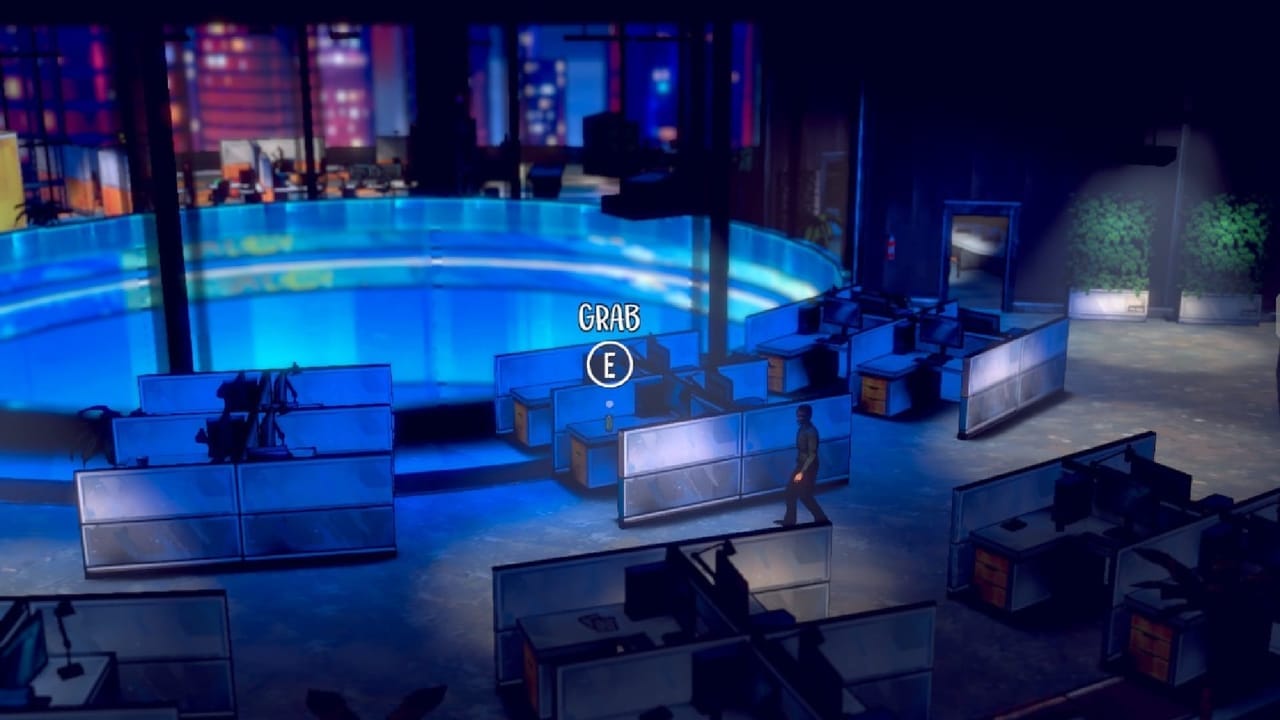
The party scene is broken and buggy. That may explain why the loading screen tip turned out to be useless. The tip claims something to the effect of “while social engineering, be aware of who’s listening.” So, while pitching my con to a partygoer, I tensed up for just an instant when I noticed someone marked “the doctor” listening in to my fraudulent medical advice. For a moment, I expected the doctor to butt in, unraveling my web of lies unless I could talk my way out. Then I remembered I was playing Thief of Thieves. Whether bug or oversight, nothing happens. I became absolutely sure of this when my accomplice at the party spoke to me about our heist plans less than a foot away from the party hostess.
After the party, Celia finds herself at an investing firm. Incredibly, this map has no security cameras, even though part of the mission is breaking into a bank vault. This section has a few decent timed stealth sequences and a little character building for the less-irritating hacker. Unfortunately, this mission finishes up via either a nonsensical speech encounter or catastrophe.
This speech check is significantly worse than the previous one. First, notice I have not used the word “puzzle,” that would imply there’s some kind of logic to unravel. In the previous speech check, Celia must find four pieces of evidence (one of them hidden in a previous level) and present them in the correct order. While very flawed, at least it’s interesting. In the investment firm speech check, you have no idea what you’re doing. Without any warning, Celia starts playing an overblown character. You have to guess through four coinflips with ambiguous Alpha Protocol-style dialogue quips, meaning you only have a 6% chance to succeed on your first attempt. You might as well roll a d20.
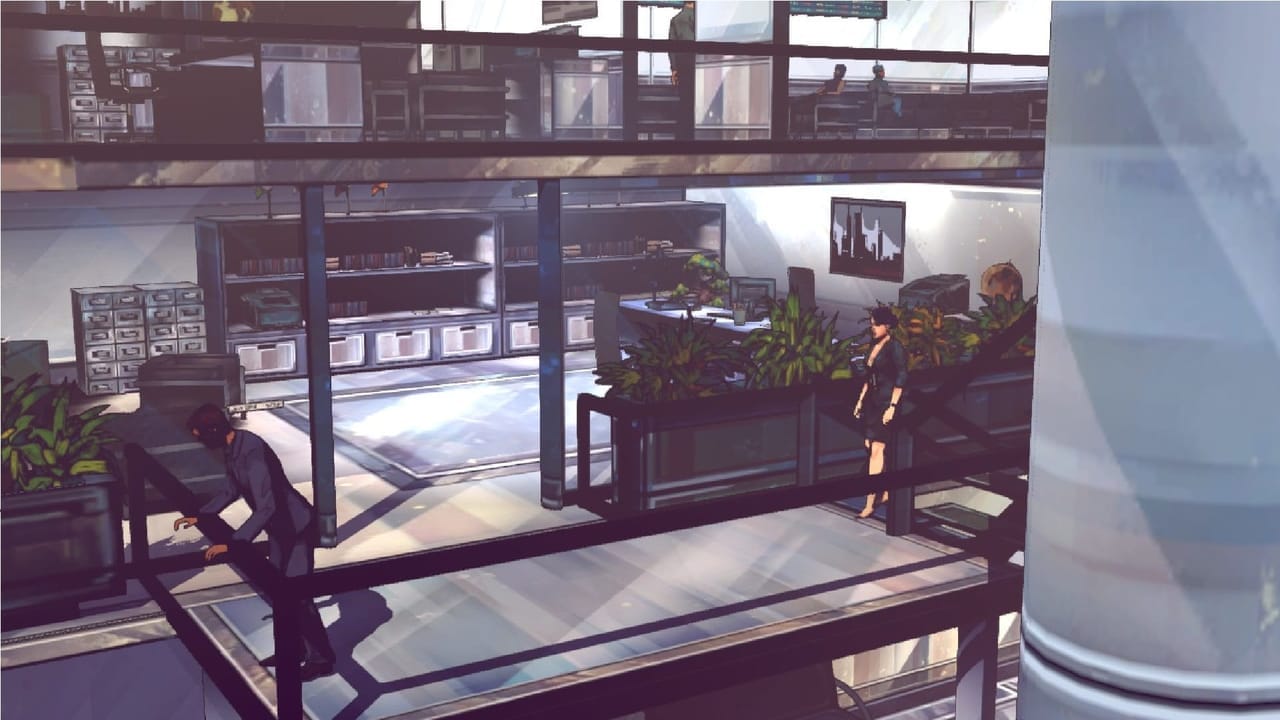
After the investment firm and a framerate strangling action scene filled with bad AI incessantly repeating annoying dialogue, we hit the finale of Volume 4. You’re supposed to pick an accomplice to help. I, of course, chose no one because the party had proven themselves completely useless. At the start of the finale, a message pops up essentially saying “No more hand-holding. This is where it gets serious. Use everything you’ve learned so far.” Reading this message made me pause the game and really think about what I’d learned in my five hours playing Thief of Thieves.
I didn’t learn to sneak, because the stealth mechanics are awful and the AI is both stupid and unpredictable. I didn’t learn to play minigames as intended, avoid animals or cameras, reliably lock people in closets, blend in with crowds, or even complete speech encounters. Thief of Thieves only used each of these mechanics once, so how could I have learned them?
Moments after this reflection, I realized it didn’t matter if I learned anything. In its last chance for redemption, Thief of Thieves doesn’t develop any of its many, many mechanics. It throws out everything that made it flawed, but unique and goes back to the bare basics. If you played the tutorial, you can finish the finale.
Dodge some patrolling guards, pickpocket a key, go up a level and do basically the same thing twice more. That’s it. That’s what all of this has been leading up to. Based on your choices, it might be easier than that. Since Volume 3, there have been a few optional objectives to make the finale shorter. The most impactful of these involves finding two secrets at the party. If successful, you can skip the first two-thirds of the finale.
This is something many games struggle with. How can you reward players who put in the extra work? I don't think making the game shorter is ever an effective way to reward players who like the game enough to put in additional work. A better choice might be completing optional objectives to enhance existing gameplay or make difficult sections easier, without eliminating them entirely.
The story wraps up smoothly, but awkwardly. Before the end, there’s one more speech check. This one is fine. During a briefing at the beginning of Volume 4, you learn everything you need to know about big bad. If you remember that in the finale, the speech check is easy. That’s a decent memory puzzle using setup and payoff. However, it once again highlights the problem with funneling responsive storytelling. Like everything else in Thief of Thieves, you win even if you fail.
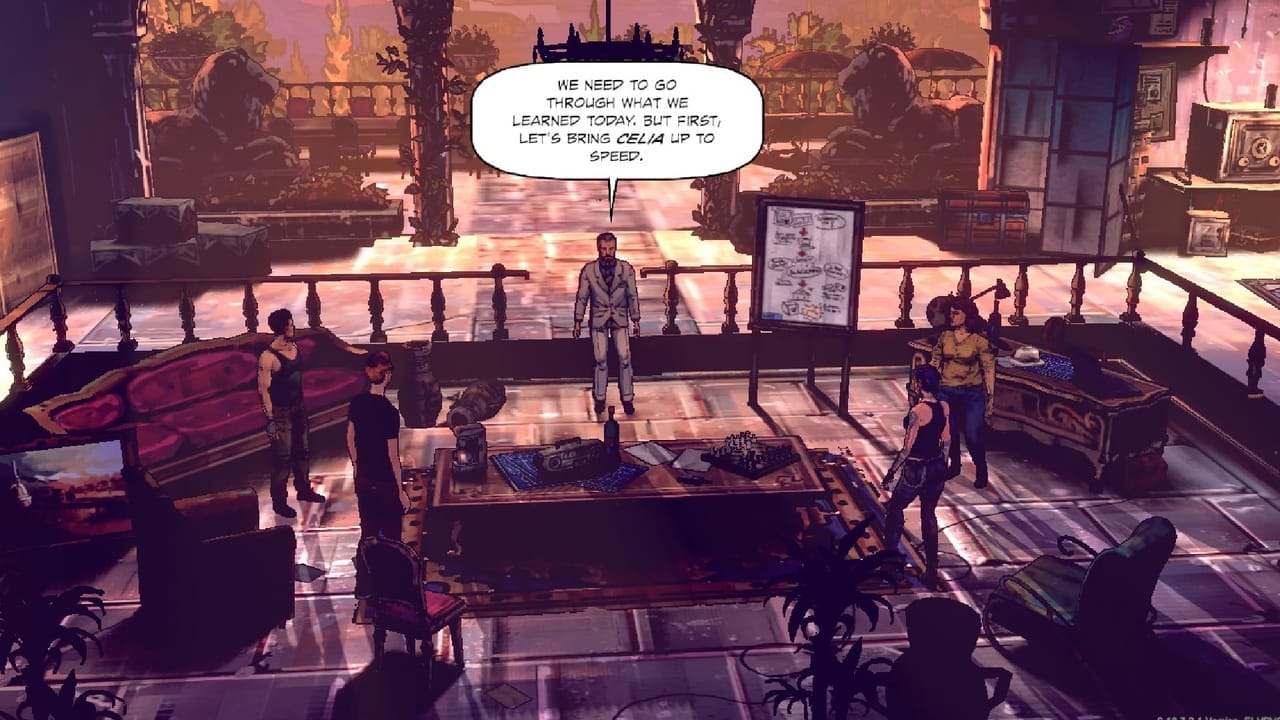
Thief of Thieves Review | Final Thoughts
Thief of Thieves: Season One is a disaster. Nothing about it works properly. The stealth is bare bones, the AI doesn't work, and the broken security cameras invalidate both narrative and gameplay. Puzzles attempt to mix things up, but the lockpick minigame is borderline unplayable and the speech encounters are little more than trial and error coin flips. To top it all off, an awful, unresponsive camera straight out of 1996 manages the show.
The story is weak, the antagonists are cardboard cutouts, and allies are the same archetypes in every crime movie with an extra dash of forgettable. Thief of Thieves is a mid-2018 release that plays like a pre-Thief stealth game. All I can say to Thief of Thieves' credit is that it looks nice, though there are no facial animations, and the soundtrack is good.
Thief of Thieves is the worst kind of bad. It’s completely inept, but not dumb enough to laugh at, not like an Ed Wood movie. It’s a painful kind of bad. Skipping content for completing extra objectives feels like a fitting reward only because it means the experience will be over sooner. It’s just not fun.
Our Thief of Thieves review was conducted on Steam with a code provided by the developer. An Xbox One release is also in the cards.
Review Summary
Pros
- Colorful Comic Graphics
- Good Music
Cons
- Abysmal AI
- Terrible Minigames
- Awful Camera
- Weak Stealth
- Poor Characterization
- Coin Flip Speech Checks
Have a tip, or want to point out something we missed? Leave a Comment or e-mail us at tips@techraptor.net
